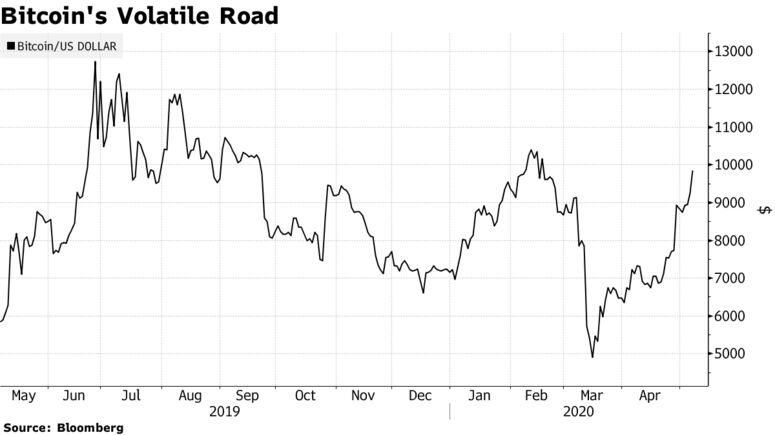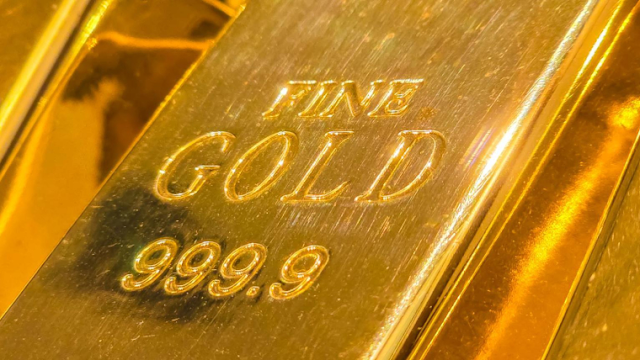Paul Tudor Jones investit dans le Bitcoin comme protection contre l'inflation qu'il voit arriver après le COVID-19

D'après Bloomberg, le Macro investisseur Paul Tudor Jones a pris quelques positions sur le Bitcoin.
Il devient un des premiers grands noms parmi les milliardaires du secteur, à prendre publiquement position en faveur de la crypto-devise
Il indique que cet investissement lui rappelle le rôle qu'avait pris l'Or dans les années 70.
Il indique que cet investissement lui rappelle le rôle qu'avait pris l'Or dans les années 70.
Son pari en faveur de Bitcoin et surtout de l'or par ailleurs est basé sur la prédiction d'un retour à l'inflation dès que la reprise se produira après le COVID-19.
Il précise que les conditions différentes de l'après crise de 2008, empêcheront de remonter les taux, tant l'économie est devenue endettée et dépendante de cette dette.
De plus en plus, je me dis également que dans la deuxième phase de cette crise il va falloir trouver une protection contre l'inflation qui pourrait faire son retour après plus de 30 ans d'absence... C'est d'ailleurs cette anticipation qui propulse l'Or à de nouveaux sommets après une consolidation de 7 ans.
Car les banques centrales ont encore franchi un nouveau palier dans leur réponse au coronavirus...
Mais il est encore possible qu'on ait droit à une nouvelle vague de baisse "déflationniste" avant d'aller ENCORE plus loin dans l'injection de liquidité et le saut dans une nouvelle période inflationniste...
Le timing, ainsi que le choix de la bonne classe d'actif sera critique.
Et peut-être cela vaut-il la peine de diversifier ses investissements dans cette optique...
De mon coté, à un niveau beaucoup plus modeste, je m'intéresse au Bitcoin depuis quelques années, en complément de mes positions sur l'or et les actions du secteur...
Voici quelques citations de l'article de Bloomberg
“The best profit-maximizing strategy is to own the fastest horse,” Jones, the founder and chief executive officer of Tudor Investment Corp., said in a market outlook note he entitled ‘The Great Monetary Inflation.’ “If I am forced to forecast, my bet is it will be Bitcoin.”
Jones, who said his Tudor BVI fund may hold as much as a low single-digit percentage of its assets in Bitcoin futures, becomes one of the first big hedge fund managers to embrace what until now has largely been snubbed by mainstream advocates. He was motivated to take a hard look at Bitcoin after considering the implications of massive fiscal spending and bond-buying by central banks to combat the coronavirus pandemic, he said.
By his calculation, $3.9 trillion of money, the equivalent of 6.6% of global economic output, has been printed since February.
“It has happened globally with such speed that even a market veteran like myself was left speechless,” Jones, 65, wrote. “We are witnessing the Great Monetary Inflation -- an unprecedented expansion of every form of money unlike anything the developed world has ever seen.”
The question for a macro investor like Jones was how to hedge. He said he considered various bets on gold, Treasuries, certain types of stocks, currencies and commodities before recognizing a “growing role for Bitcoin.”
An outside spokesman for Jones declined to comment.
At the same time, Bitcoin has been on a tear, doubling from its recent low in mid-March.

Jones first dabbled in Bitcoin in 2017, doubling his money before exiting the trade near its peak at almost $20,000. This time, he said he evaluated Bitcoin as a store of value and decided it passes the test based on four characteristics: purchasing power, trustworthiness, liquidity and portability.
Read more: Bitcoin Is Staging a Comeback Reminiscent of 2017 Bubble Frenzy
“I am not a hard-money nor a crypto nut,” he wrote. “The most compelling argument for owning Bitcoin is the coming digitization of currency everywhere, accelerated by Covid-19.”
According to Jones, investors need to throw away the financial playbook of the past decade and return to the monetarist theories of Milton Friedman and old-school indicators such as the M2 money supply.
The post-pandemic recovery will be different from what happened after the last financial crisis, he argues, partly because bank balance sheets are stronger now and the Federal Reserve is allowing them to lend aggressively.
While the current collapse in demand will keep prices of goods and services from rising in the short run, Jones doubts that the Fed can prevent that from happening over the longer term.
“How reasonable is it to expect that in the recovery phase the Fed will be able to deliver an increase in interest rates of a magnitude sufficient to suck back the money it so easily printed during the downswing?” he asked.
Government and corporate debt levels are exploding, making it harder for the economy to “digest” increases in borrowing costs, he said. That, and the possibility -- “no longer a sacred cow” -- that the Fed chairman becomes a political tool of the administration in power raises the likelihood that rate hikes will be slow to come and smaller than needed, he added.
Jones started his financial career trading cotton futures in the mid-1970s as a recent University of Virginia graduate in economics. It was a time of stagflation and bear markets in stocks.
“Bitcoin reminds me of gold when I first got into the business in 1976,” he wrote.
Jones said he remains a fan of gold and predicted it could rally to $2,400 and possibly to $6,700 “if we went back to the 1980 extremes.”
--------------------------------------
Macro investor Paul Tudor Jones is buying Bitcoin as a hedge against the inflation he sees coming from central bank money-printing, telling clients it reminds him of the role gold played in the 1970s.
“The best profit-maximizing strategy is to own the fastest horse,” Jones, the founder and chief executive officer of Tudor Investment Corp., said in a market outlook note he entitled ‘The Great Monetary Inflation.’ “If I am forced to forecast, my bet is it will be Bitcoin.”
Jones, who said his Tudor BVI fund may hold as much as a low single-digit percentage of its assets in Bitcoin futures, becomes one of the first big hedge fund managers to embrace what until now has largely been snubbed by mainstream advocates. He was motivated to take a hard look at Bitcoin after considering the implications of massive fiscal spending and bond-buying by central banks to combat the coronavirus pandemic, he said.
By his calculation, $3.9 trillion of money, the equivalent of 6.6% of global economic output, has been printed since February.
“It has happened globally with such speed that even a market veteran like myself was left speechless,” Jones, 65, wrote. “We are witnessing the Great Monetary Inflation -- an unprecedented expansion of every form of money unlike anything the developed world has ever seen.”
The question for a macro investor like Jones was how to hedge. He said he considered various bets on gold, Treasuries, certain types of stocks, currencies and commodities before recognizing a “growing role for Bitcoin.”
An outside spokesman for Jones declined to comment.
At the same time, Bitcoin has been on a tear, doubling from its recent low in mid-March.

Jones first dabbled in Bitcoin in 2017, doubling his money before exiting the trade near its peak at almost $20,000. This time, he said he evaluated Bitcoin as a store of value and decided it passes the test based on four characteristics: purchasing power, trustworthiness, liquidity and portability.
Read more: Bitcoin Is Staging a Comeback Reminiscent of 2017 Bubble Frenzy
“I am not a hard-money nor a crypto nut,” he wrote. “The most compelling argument for owning Bitcoin is the coming digitization of currency everywhere, accelerated by Covid-19.”
According to Jones, investors need to throw away the financial playbook of the past decade and return to the monetarist theories of Milton Friedman and old-school indicators such as the M2 money supply.
The post-pandemic recovery will be different from what happened after the last financial crisis, he argues, partly because bank balance sheets are stronger now and the Federal Reserve is allowing them to lend aggressively.
While the current collapse in demand will keep prices of goods and services from rising in the short run, Jones doubts that the Fed can prevent that from happening over the longer term.
“How reasonable is it to expect that in the recovery phase the Fed will be able to deliver an increase in interest rates of a magnitude sufficient to suck back the money it so easily printed during the downswing?” he asked.
Government and corporate debt levels are exploding, making it harder for the economy to “digest” increases in borrowing costs, he said. That, and the possibility -- “no longer a sacred cow” -- that the Fed chairman becomes a political tool of the administration in power raises the likelihood that rate hikes will be slow to come and smaller than needed, he added.
Jones started his financial career trading cotton futures in the mid-1970s as a recent University of Virginia graduate in economics. It was a time of stagflation and bear markets in stocks.
“Bitcoin reminds me of gold when I first got into the business in 1976,” he wrote.
Jones said he remains a fan of gold and predicted it could rally to $2,400 and possibly to $6,700 “if we went back to the 1980 extremes.”
